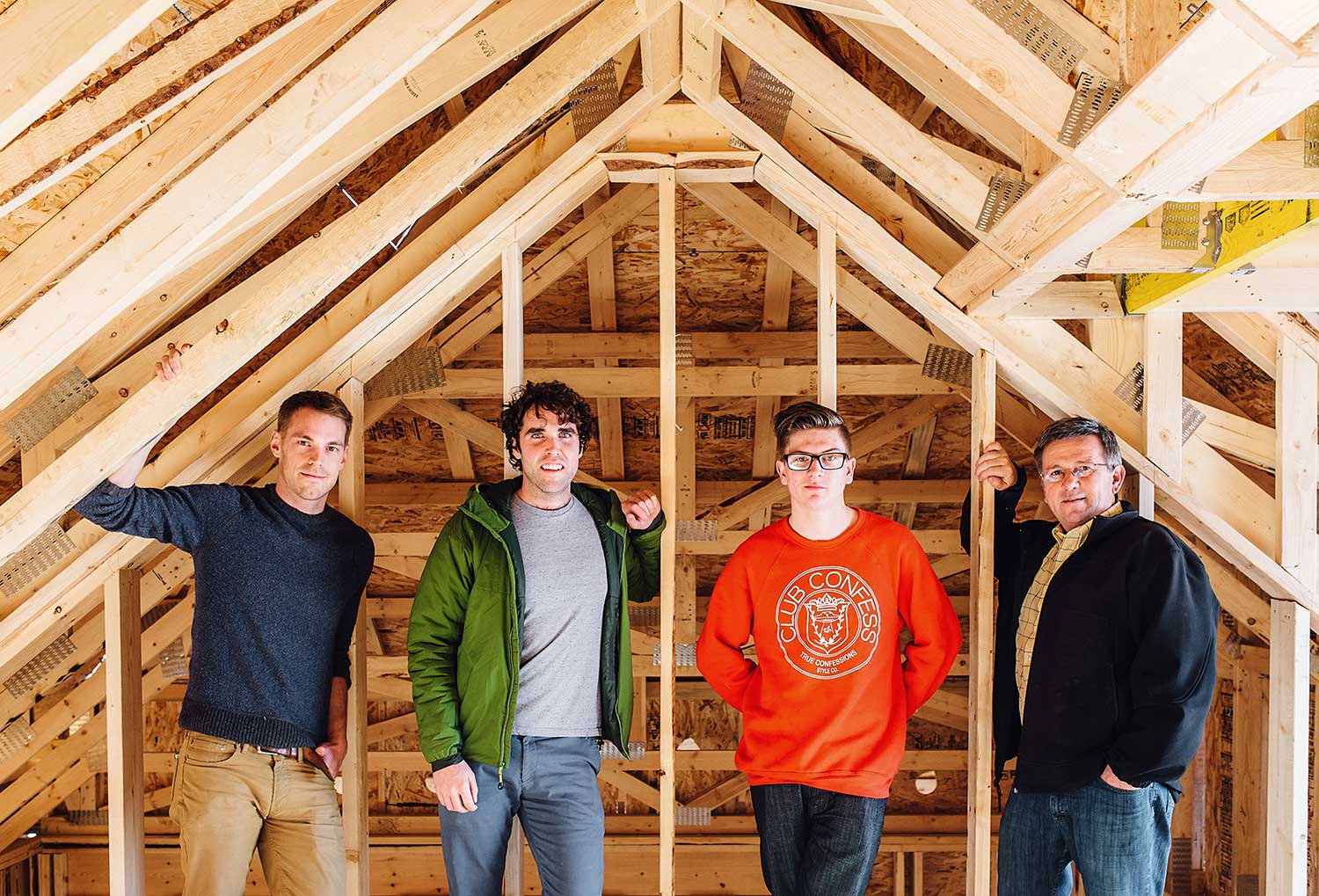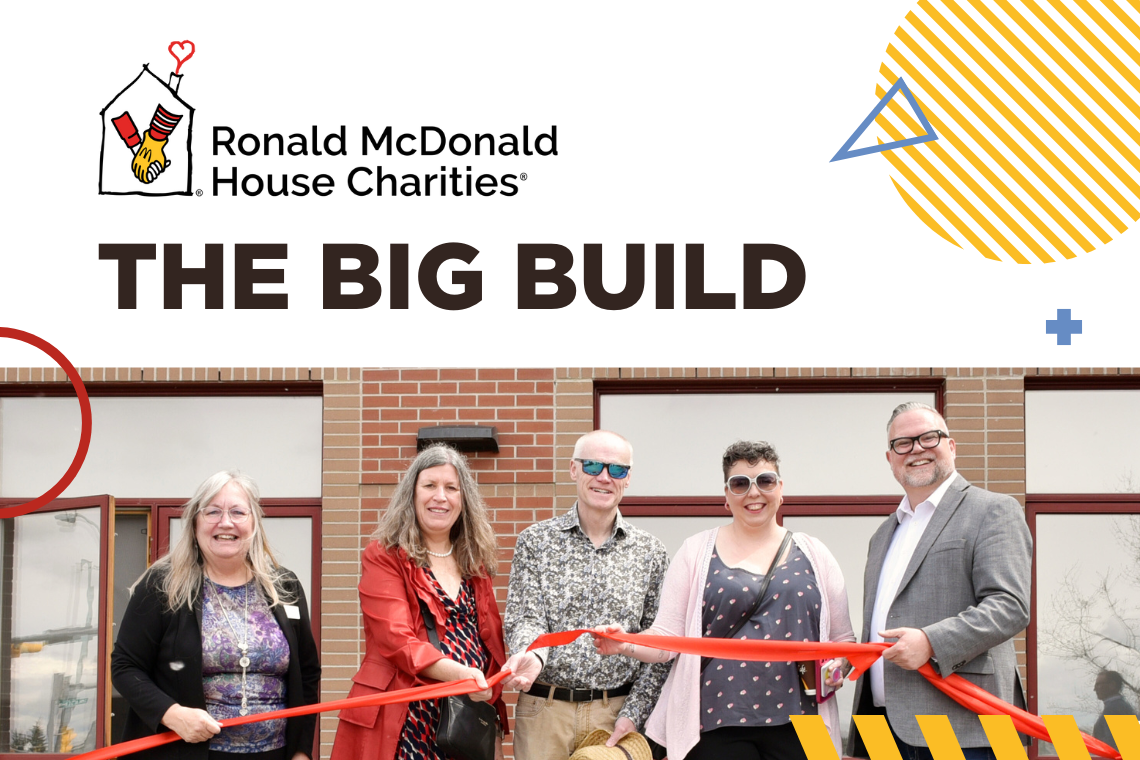
March 09, 2017 | Barbara Balfour
Building for generations
With a rapidly aging population, laneway homes may be the future of housing
Consider this nostalgic scene: a grandmother bakes cookies while her granddaughter stands on a stool beside her, kneading the dough. Such rare quality time could be a daily occurrence for those who sign up for the perks of multi-generational living, say Studio North co-founders Mark Erickson and Matthew Kennedy.
The architects recently finished building a laneway home for a West Hillhurst 1950s post-war bungalow. Their client, who grew up there, commissioned the home for his wife's parents to join them.
A laneway home is typically a second dwelling on a lot that backs or fronts onto a laneway. There are between 30-40 such homes in Calgary, say Erickson and Kennedy, who currently have two such homes under construction.
One of their projects is located in Crescent Heights. It's intended for the client's daughter, with a long-term plan for the mother to eventually take it over. The other is a heritage home in Parkdale dating back to 1911. They just finished restoring the primary home and have plans to build a laneway home in the back.
"We are the biggest supporter of laneway homes and really pushing the concept," said Erickson.
Many of their ideas for multi-generational dwellings originate from when Erickson was living in Gambia, West Africa in 2011, where he taught architectural technology at the local university.
"The families there add buildings to their existing compound to accommodate more members – this way the family is able to stay together and support each other, making sure the grandparents are being taken care of while also getting extra help bringing up the kids," said Erickson.
"The elders are respected for their wisdom and considered a huge part of shaping the community. It was a way of living I really respected, as I saw the value in how it enhanced and strengthened the sense of community in their neighbourhoods."
Kennedy, who completed his architectural thesis on laneway housing in Calgary in 2012, sees compact living as a convenient solution for those struggling to afford city centre living, while also adding diversity to neighbourhoods. A laneway home can be as large as 850 square feet, or 75 square metres, he says.
The families there add buildings to their existing compound to accommodate more members – this way the family is able to stay together and support each other, making sure the grandparents are being taken care of while also getting extra help bringing up the kids.
"It depends on the lot size – you can only build on 45 per cent of your lot, but you can push it by 10 per cent, so up to 1000 square feet," said Kennedy.
"For us it's an interesting new typology that offers a lot of possibilities for our generation. The land cost of a laneway home built on a family property is essentially free, so you build it for the cost of a condo without the associated fees."
"This allows people our age to be able to afford to live in the inner city, and have all the amenities that come with it as well as have a family."
Studio North isn't the only Calgary firm being commissioned to build laneway homes. Chris Lemke, managing partner at Alloy Homes, is building a more unusual laneway suite for his clients' parents in the Kensington area that is connected to an underground tunnel with a deck over top of it.
"We do a lot of urban redevelopment, but this configuration is a first for us," said Lemke. "While it does push the limits with respect to zoning bylaws, we had a great file manager at the City."
"Our clients wanted something more than just a garage suite for their parents. They wanted a real home for them, not a 400-square-foot apartment, so they can choose to interact with the family in the main home or stay in their own area."
While many people tend to think of multi-generational families as being visible minorities, the trend across Canada shows it's a phenomenon that crosses ethnicities, says University of Calgary professor Jyoti Gondek, also a member of the Urban Land Institute Alberta District Council.
Over the last two census periods between 2006 and 2011, Stats Canada found the number of grandparents living with their grandchildren has increased almost two-fold in all of Canada, from two to three per cent, to five or six per cent.
"A lot of it may have to do with the economy and cost of first time purchases. Kids are staying home longer, while seniors are selling their property and moving in with their kids," said Gondek, director of the Westman Centre for real estate studies at the Haskayne School of Business.
"The idea of families wanting to live in the same home, or within close proximity to each other, is something we're seeing more of in Calgary. It's a shift from the post-war nuclear family we saw when suburbs were becoming a thing."
Ethnicity is undoubtedly still an important factor with regard to housing, especially concerning issues of immigration and adaptability. At the Margaret Chisolm resettlement centre, where refugees stay after they get picked up at the Calgary airport, they're given a unit with the typical kitchen, bedroom and living room layout, but family members will still all sleep in the same room.
"All the mattresses get piled together in the living room, partly because of habit from living together, but also because of fear, context and where they come from," said Catherine Hamel, an associate professor in architecture at the Faculty of Environmental Design at the University of Calgary.
From a broader perspective, how we will take care of a rapidly aging population, while taking into account the current lack of room in nursing homes, is a problem we must not ignore, she adds.
"Just in the last week I was chatting to a few strangers about this, and how they moved to another city to take care of an elderly parent. Culturally, to live with your parents is kind of an odd thing – it can be seen as too close for comfort. Laneway homes are a way of having some separation – and those separate entrances are important," said Hamel.
"We need to think of construction in different ways and have more collaboration between developers and designers," Hamel added. "Calgary is beginning to adapt that way from that single-family, 'my castle is my domain' mentality' – there's also a different level of infiltration of people and a new generation with their own standards and expectations."
For Erickson and Kennedy, the very essence of compact living is about using creative ways to make the most out of available space.
"In our West Hillhurst project, we designed solutions built to accommodate the needs of an aging generation, such as an accessible ramp going to the living area, grab bars in washrooms, and a folding shower seat," said Kennedy.
"We like to experiment ... You can use spaces in more than one way and we try to make it fun along the way."
Tagged: laneway housing | Secondary Suites | Studio North




